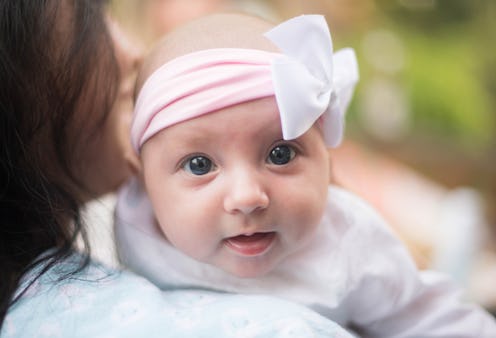Life
This Is Why Babies' Eyes Change Color

The latest episode of Mental Floss’s Big Questions series answers a question that, if you’ve ever spent much time around babies, you may have asked yourself before: “Why do babies' eyes change color?” As series host Craig Benzine explains, most Caucasian babies are born with blue eyes — but by the time they reach adulthood only one in five will still have their “baby blues.” So what’s the story?
It all comes down to melanin, the pigment that determines skin and hair color. Melanin also gives color to our eyes; more melanin means darker eyes, so people with a lot of melanin have brown eyes and people with only a little have blue. Those who are somewhere in the middle get green or hazel eyes.
Babies are born with low levels of melanin (at least, compared to what they’ll have as adults), and the amount increases as they get older. So, if they’re born with small amounts of melanin, they’ll at first have blue eyes. If the melanin in their eyes increases enough over time, the color will change to brown, hazel, or green; if the amount of melanin stays low, their eyes will stay blue. Benzine explains that this color change usually only happens in Caucasian babies because they are often born with low levels of melanin in their eyes. “African, Hispanic, and Asian babies,” he says, “are typically born with brown eyes which don't change color.” In most cases, eye color changes in infants will happen near the six-month mark, but they can occur up to the age of three.
Some people argue that you can tell if a baby’s eye color will change by looking at his or her eye from the side (eliminating the effect of light on your perception of the color). Benzine says that traces of gold in the iris mean that the baby’s eyes will probably go brown or green as the baby gets older. He adds, “This needs to be properly studied though. And I'm not gonna do it. Someone will eventually.”
Watch the whole video below:
Images: Pexels; YouTube